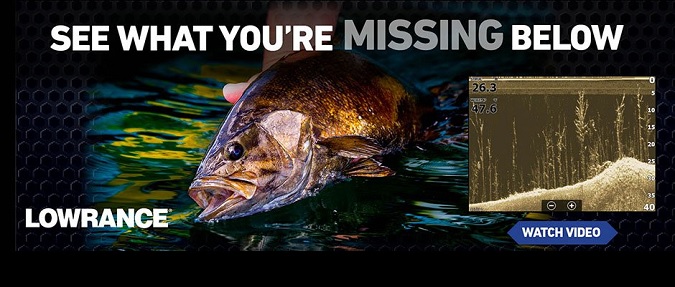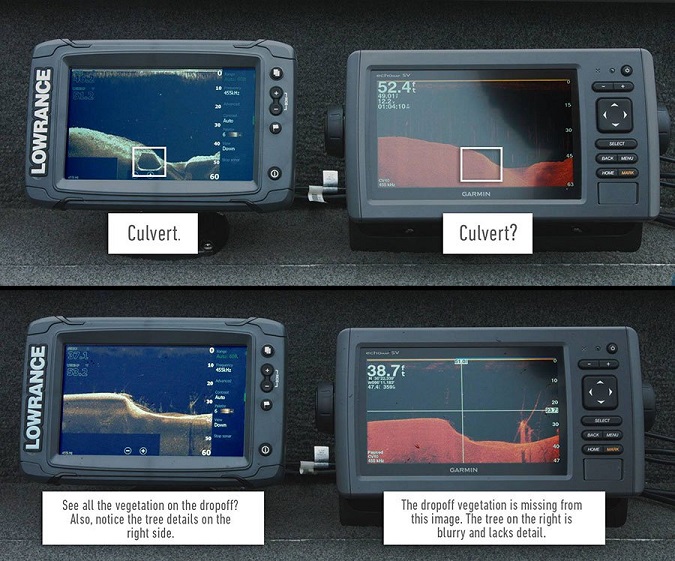Before Lowrance invented and sold the first recreational sonar product for fishermen in 1957, many anglers focused their time on the water searching for gamefish near or around the shoreline. The reason is simple: When you can see fish-holding structure along the bank of a lake, you are more confident in locating key fish-holding areas. The Lowrance Fish-Lo-K-Tor – also known as the “The Little Green Box” – changed all that. Using this portable, battery-operated device, fishermen gained the confidence they needed to move off the shoreline with a whirling dial of red lights that could define depth changes, and mark underwater structure as well as gamefish. While this first fishfinder was simple in design – requiring a considerable amount of training to use effectively – it changed the way we fished, and it definitely helped put fish in the boat. Today, when a marine electronics company announces a “ground breaking” fishfinder that delivers a meaningful benefit, anglers take notice. And that’s where our story begins.

In 2014 Garmin launched DownVü, a feature that gave anglers a photo-like image of what was directly beneath their boat. Rocks look like rocks, trees look like trees and fish look like fish. It represented a game-changing sonar technology. The problem – DownVü technology isn’t a Garmin original design. It was a duplicate design of Lowrance’s DownScan Imaging™ – the same technology offering the same features and benefits. DownScan Imaging had been designed, patented and brought to market by Lowrance’s parent company Navico years before. Rather than develop their own solution or license the Navico technology – as other marine electronics manufacturers had done – Garmin took a shortcut that resulted in a 2015 ruling by the International Trade Commission (ITC) stating that Garmin’s DownVü transducer design infringes upon Navico patents, and those DownVü products could no longer be imported into the United States.

In an effort to work around the ITC ruling, Garmin modified the design of the DownVü transducer by tilting the angle of the down-facing element. An ongoing enforcement action is underway, relating to Garmin’s attempt to import the tilted-element transducer without seeking ITC approval.
The latest workaround attempt by Garmin is the recently introduced ClearVü scanning solution, which is a radically different design. Garmin’s new design no longer infringes the patents like before, but that is because ClearVü features no down-facing sensor. So to be clear, in the U.S., Garmin ClearVü is sold without any down-facing transducer element. For anglers depending on their fishfinder to identify fish and structure beneath the boat, this new design is a cause for concern.
ClearVü compiles data from the side-scanning elements in the transducer, then uses software to try to fill in the missing information below your boat. If you pass directly over a fish, your “down-scanning” ClearVü fishfinder may not see it, because it could be out of range of the side-scanning beams. In an attempt to produce downward data from side-scanning beams, Garmin has managed to reduce clarity and distort the appearance of targets across the board.
The idea of creating a down-scan view by using only the side-scan sonar signals is not new. Other marine electronics manufacturers tried this years ago, until they decided the best solution for anglers is to offer true DownScan Imaging, which is why all other marine electronics manufacturers, such as Humminbird and Raymarine, now license the true Navico DownScan Imaging technology for use on their fishfinders.
Since 1957, sonar technology has changed the way we fish with meaningful benefits that gave us the confidence to move off the shoreline to find and catch more and bigger fish. When those fishfinding benefits fall short of what we should expect, it’s important to take note, so you can make the most of your time on the water.
